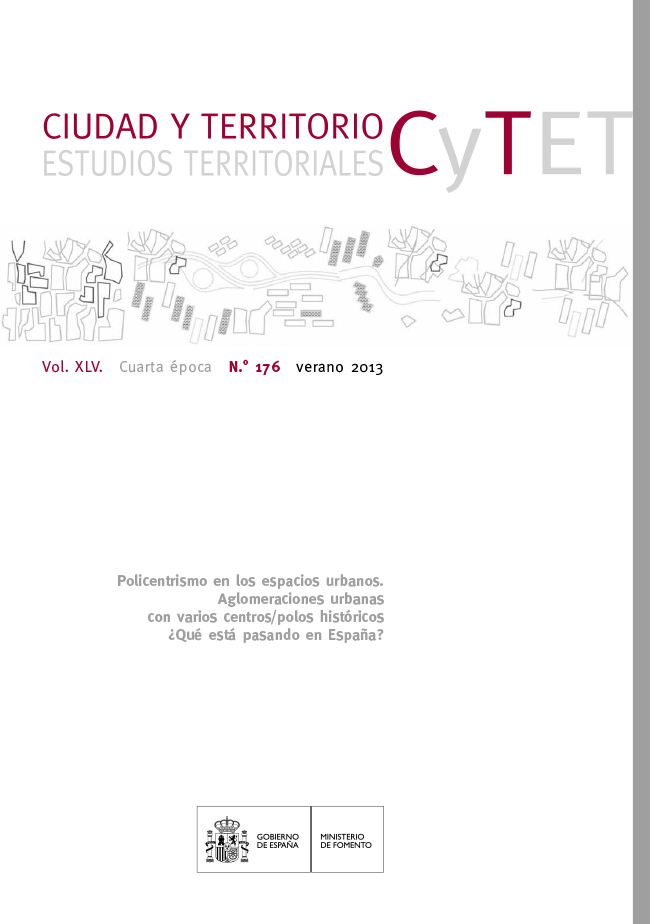Polycentricity in the Spanish urban system: an analysis for seven metropolitan areas
Keywords:
Policentrismo, áreas metropolitanas, economía urbanaAbstract
The recent growth of urban systems, their economic restructuration and the reduction of
transport costs have generated a new metropolitan paradigm in which urban sprawl and
polycentrism are gaining share again. In this paper the internal structure of the seven biggest
metropolitan Spanish areas is studied, in order to know whether polycentrism is the dominant
pattern in the allocation of both employment, and population. Using methods based on travelto-
work data and employment density potential subcentres are identified. The results suggest
a clear difference on the structure of urban areas: Barcelona, Valencia and Bilbao stand out as
the most polycentric urban systems, while Madrid, Seville and Zaragoza the less polycentric;
Málaga is an outstanding case, because few subcentres do concentrate a relatively important
share of economic activity. Furthermore, the bigger is the polynucleated structure of urban
systems, the bigger is their complexity, understanding such a complexity as the level of direct
dependence of each metropolitan municipality and its respective centre, that might suggest,
for the case of more complex and polycentric systems, a high level of sustainability, both in
terms of time spent on commuting and reducing the energy use.
Downloads
Downloads
Published
How to Cite
Issue
Section
License
Copyright (c) 2013 Carlos Marmolejo Duarte, Jaume Masip Tresserra, Carlos Aguirre Núñez

This work is licensed under a Creative Commons Attribution-NonCommercial-NoDerivatives 4.0 International License.
Considering the provisions of the current legislation on Intellectual Property, and in accordance with them, all authors publishing in CyTET give -in a non-exclusive way and without time limit- to the Ministry of Transport, Mobility and Urban Agenda the rights to disseminate, reproduce, communicate and distribute in any current or future format, on paper or electronic, the original or derived version of their work under a Creative Commons Attribution-NonCommercial-NoDerivative 4.0 license International (CC BY-NC-ND 4.0), as well as to include or assign to third parties the inclusion of its content in national and international indexes, repositories and databases, with reference and recognition in any case of its authorship.
In addition, when sending the work, the author(s) declares that it is an original work in which the sources that have been used are recognized, committing to respect the scientific evidence, to no longer modify the original data and to verify or refute its hypothesis. Author(s) also declare that the essential content of the work has not been previously published nor will it be published in any other publication while it is under evaluation by CyTET; and that it has not been simultaneously sent to another journal.
Authors must sign a Transfer of Rights Form, which will be sent to them from the CyTET Secretariat once the article is accepted for publication.
With the aim of promoting the dissemination of knowledge, CyTET joins the Open Journal Access (OA) movement and delivers all of its content to various national and international indexes, repositories and databases under this protocol; therefore, the submission of a work to be published in the journal presupposes the explicit acceptance by the author of this distribution method.
Authors are encouraged to reproduce and host their work published in CyTET in institutional repositories, web pages, etc. with the intention of contributing to the improvement of the transfer of knowledge and the citation of said works.








 Enlace a CyTET en Linkedin
Enlace a CyTET en Linkedin